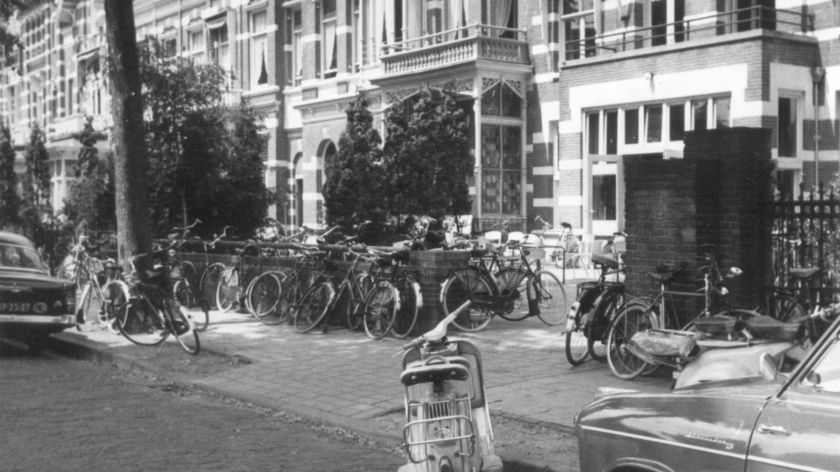Then & Now: The university cafeteria (mensa) in 1965
-
 The university cafeteria (mensa) in 1965. Photo: The Nijmegen Regional Archives
The university cafeteria (mensa) in 1965. Photo: The Nijmegen Regional Archives
In the past, the university did not have a campus; instead, its education buildings were spread out across the city. In the context of the 95th anniversary of Radboud University, Vox is exploring the image archives to learn more about its history. What has changed? Today: the old university cafeteria (mensa).
The word ‘mensa’ (Dutch for ‘university cafeteria’) is still listed by Radboud University under its frequently used terms. However, it is likely that many students do not know the meaning of it. In Latin, mensa simply means ’table’ and is a shortened form of mensa academica. Van Dale (an authoritative Dutch dictionary) contains the following information about it:
Men·sa (de; fem. (poss. masc.); plural: mensa’s, mensae): affordable eating facility for students.
A brief but accurate summary of what the current “mensa” – De Refter (the refectory) – is today. About 60 years ago, this description was also true for the “mensa” of that time, but it looked very different. For instance, legal expert and former prime minister Dries van Agt lived in one of the student rooms above the university cafeteria between 1950 and 1954 and around the same time, the Nijmeegs Universiteitsblad (Nijmegen university journal), the early predecessor of Vox, had its offices above the cafeteria as well.
Housing, food, and sports
In 1924, the Rooms Katholieke Universiteit (Roman Catholic University) purchased Oranjesingel 42 for the Nijmegen student association, Carolus Magnus. The building also housed the Roland society and large meals were served there. Students and professors were able to get a hot meal for a low price.
Student facilities such as housing, food, and sports facilities became more important after World War II. An increasing number of students were coming from groups of the population that were less affluent and the student numbers also grew substantially. In 1951, moderator Bernard van Ogtrop SJ founded the Universiteitshuis foundation with these three goals in mind: a student chapel, student housing, and a university cafeteria.
‘Increase in the level of civilization’
Since the house for student associations on Oranjesingel 42 was too small and inaccessible for the growing number of non-members, the foundation purchased Oranjesingel 3 for the university cafeteria. On the upper level of the new property, there were several student rooms, while the university cafeteria was added below with 100 (later 120) seats. In addition to healthy food, the university board hoped to use the university cafeteria to dish up something different for the students: ‘an increase in or maintenance of the level of civilization of the students.’ In order to achieve this aim, students had to be able to make it to the cafeteria during the opening hours. Professors did not always take this into consideration during their lectures. Lectures by Professor of Psychiatry and Neurology, Sjef Prick, apparently lasted so long that students crawled under the benches in the lecture hall to leave without being seen and make it to the cafeteria in time.
As is often the case in a university’s history, this building was also quickly too small for the rapid growth in student numbers. In 1956, the university cafeteria returned to number 42: the Roland society had since left the building. 180 diners were able to be seated here. By 1965, this building was too small as well. The Universiteitshuis foundation did its name proud and designed student housing with a university cafeteria containing 600 seats, to be built in Galgenveld. In 1969, the ‘U-huis’ opened its doors.
Nowadays, Oranjesingel 42 is a film house and Oranjesingel 3 houses an online marketing agency. Since 2008, De Refter has served as the modern ‘mensa’.
Many thanks to Jan Brabers, university historian. The photo of the present-day main building was provided courtesy of Marjolein van Diejen. Historical photo: The Nijmegen Regional Archives
Sources: Rob Wolf, De Trek naar het zuiden: gebouwen van de Katholieke Universiteit Nijmegen 1923-1998 (The migration to the south: buildings of the Catholic University Nijmegen 1923-1998) (Nijmegen 1998) and Huis van de Nijmeegse Geschiedenis (Nijmegen history house).



